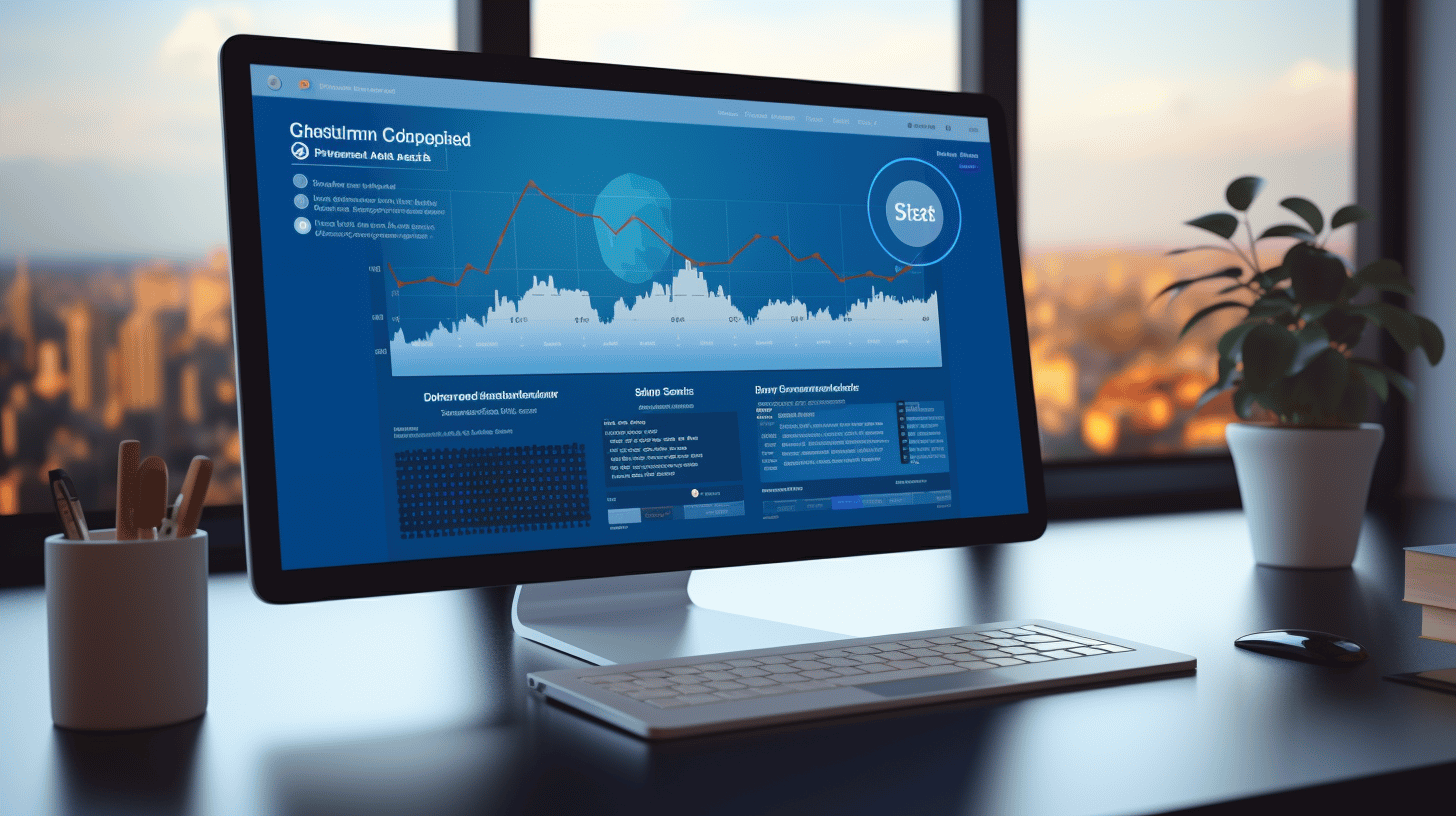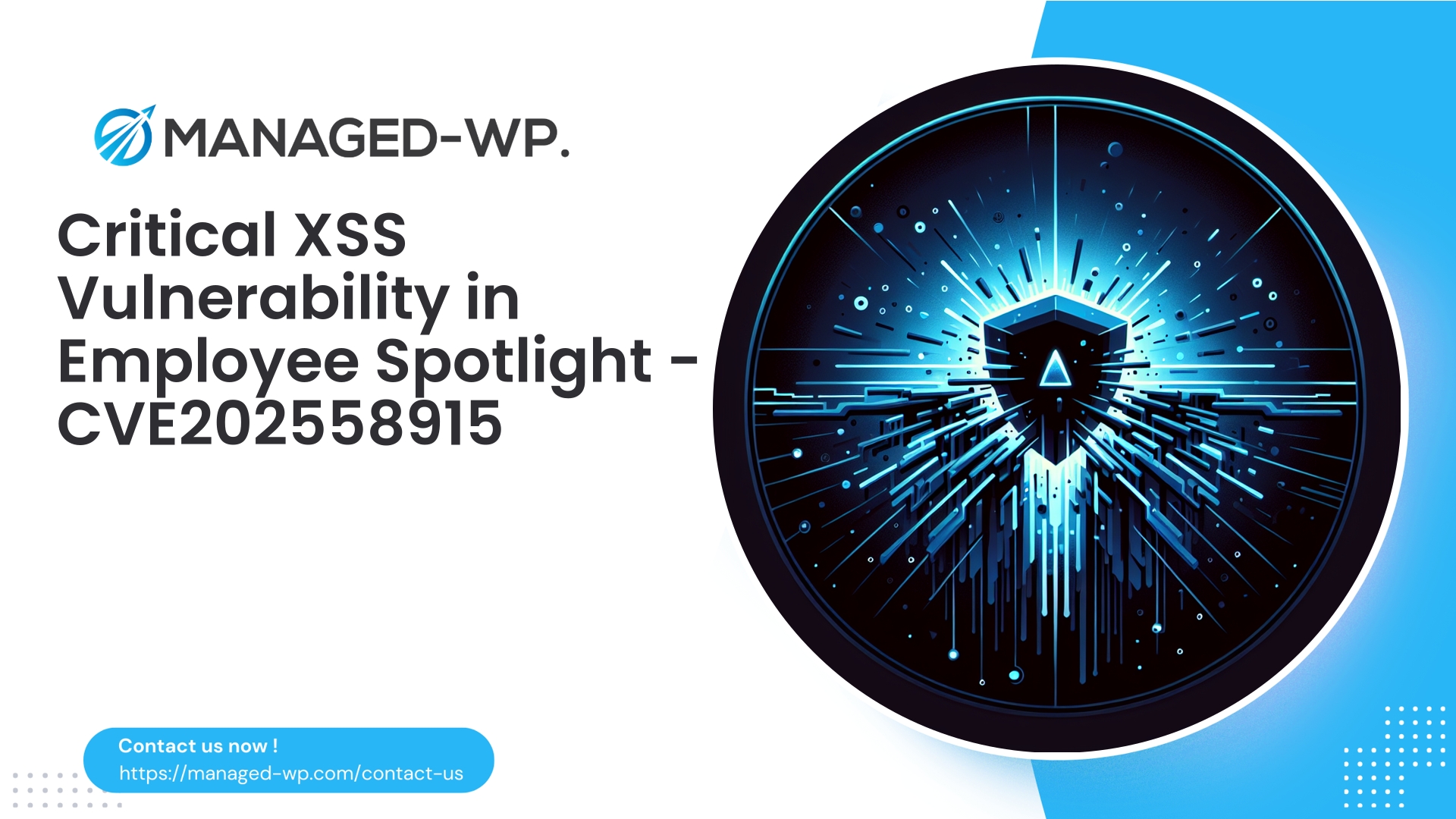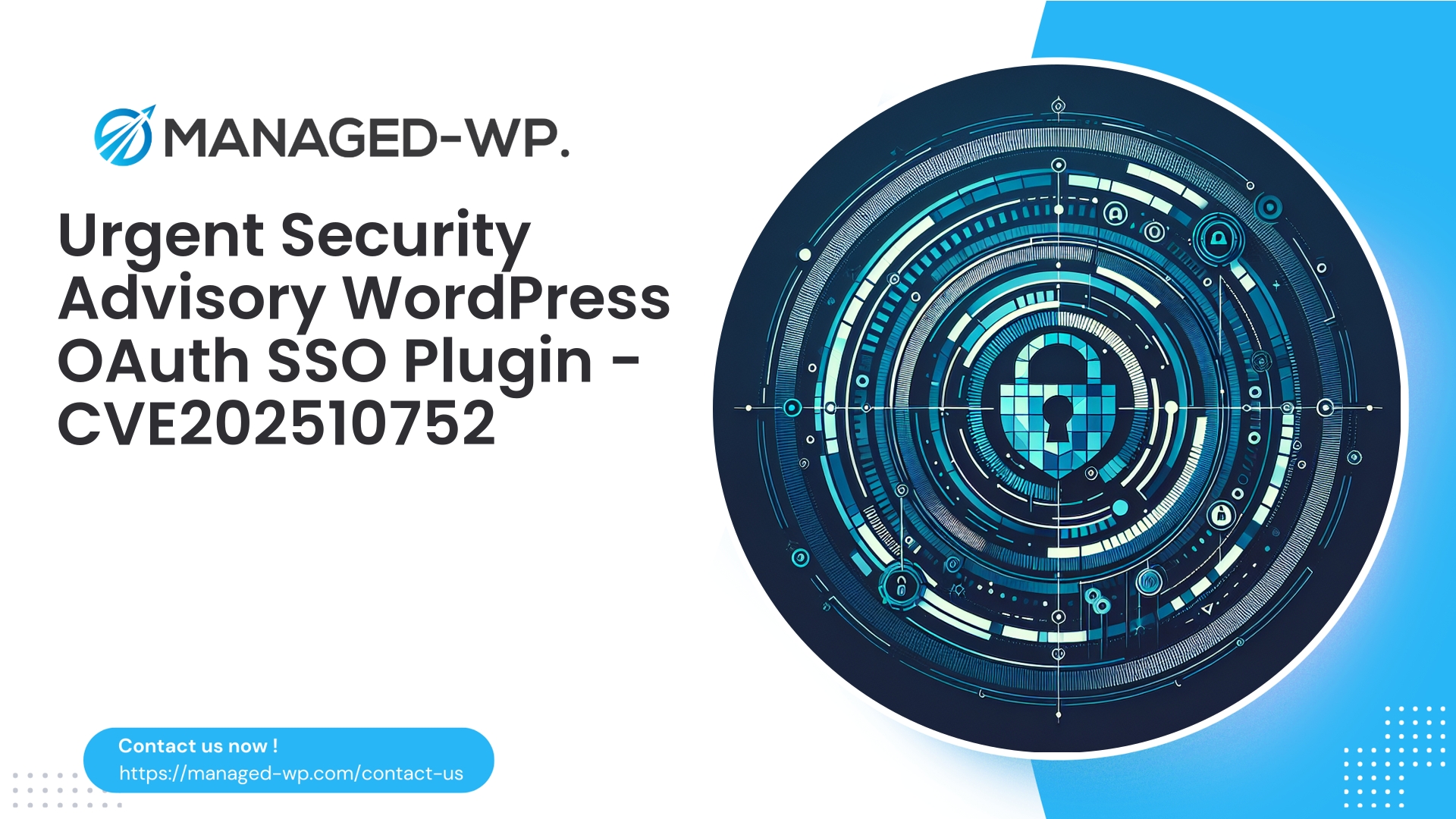| Plugin Name | Themify Builder |
|---|---|
| Type of Vulnerability | Stored XSS |
| CVE Number | CVE-2025-9353 |
| Urgency | Low |
| CVE Publish Date | 2025-09-24 |
| Source URL | CVE-2025-9353 |
Urgent Security Advisory: Themify Builder ≤ 7.6.9 — Authenticated Contributor+ Stored XSS Vulnerability (CVE-2025-9353) — Essential Actions for WordPress Site Owners
Last updated: September 24, 2025
At Managed-WP, we serve as your trusted security experts dedicated to monitoring WordPress plugin vulnerabilities as soon as they surface. A newly published vulnerability affecting Themify Builder versions 7.6.9 and earlier, identified as CVE-2025-9353, exposes sites to a stored Cross-Site Scripting (XSS) flaw. This weakness permits any authenticated user with Contributor-level access or higher to inject malicious scripts into your site’s content that execute when viewed by visitors or admins.
This advisory delivers a comprehensive breakdown of the vulnerability, real-world attack vectors, detection strategies, actionable mitigations you can implement immediately, and how Managed-WP’s advanced protections can shield your environment during patching.
Our guidance is delivered from the perspective of experienced US-based security professionals managing production-grade Web Application Firewalls (WAFs) tailored for WordPress environments. Expect clear, technical, and practical recommendations applicable for site owners, developers, and hosting providers alike.
TL;DR — Immediate Actions Required
- Vulnerability: Persistent Stored XSS in Themify Builder ≤ 7.6.9 exploitable by Contributor or higher roles.
- Priority Steps if Using Themify Builder:
- Upgrade the Themify Builder plugin to version 7.7.0 or newer—this fully resolves the issue.
- If immediate upgrade isn’t possible, restrict creation of new Contributor accounts and block their ability to submit content temporarily. Consider deactivating the plugin until patched.
- Deploy virtual patching or WAF rules (offered by Managed-WP and others) to intercept and block suspicious POST requests containing script tags or malicious event handlers.
- Audit your database and content for injected script tags or anomalous payloads, and review recent Contributor user activity.
- Follow our incident response recommendations if you detect compromise.
- Managed-WP Customers: Enable our free Basic protection plan immediately to mitigate risk during your update process. Sign up here: https://my.wp-firewall.com/buy/wp-firewall-free-plan/
Vulnerability Overview
The Themify Builder plugin contains a stored XSS vulnerability affecting versions up to and including 7.6.9. Authenticated users with Contributor access or greater can inject malicious HTML/JavaScript into builder fields or custom content areas. This unescaped content later executes in the browsers of administrators, editors, or site visitors, depending on context.
- Type: Stored Cross-Site Scripting (persistent)
- Minimum Privilege Required: Contributor role or higher
- Affected Versions: ≤ 7.6.9
- Fixed In: 7.7.0
- CVE: CVE-2025-9353
- Impact: Execution of arbitrary JavaScript enabling session hijacking, redirects, admin actions, or exploitation escalation
Contributor roles are commonly used in multi-author blogs or content workflows, making this vulnerability a critical risk vector if not addressed.
Why Stored XSS is a Serious Risk for WordPress Sites
Stored XSS poses substantial risks as malicious code persists in the site’s database and executes when specific content is rendered:
- Execution in public pages affects all visitors’ browsers, enabling data theft or redirection attacks.
- Execution within admin panels compromises elevated accounts, empowering attackers to modify site configuration, create users, install backdoors, or exfiltrate data.
- Attackers may escalate attacks to inject phishing scripts, cryptominers, or automate actions leveraging the compromised session.
- Injected scripts can act as persistent backdoors surviving plugin updates by modifying behavior or targeting other components.
Despite the low privilege required for initial exploitation, stored XSS often serves as a pivot for larger site compromises.
Potential Attack Scenarios
- Abuse via Guest Contributors: Sites allowing front-end submissions can have malicious payloads embedded that execute against any visitor.
- Administrator Impersonation: Admins previewing or editing malicious content trigger scripted actions via their elevated sessions.
- Stealthy Social Engineering: Delayed or environment-conditioned payloads activate only during admin visits.
- Supply Chain & Cross-Plugin Attacks: Malicious scripts manipulate other plugins or themes for further exploitation.
Who Should Be Concerned?
- Any WordPress site running Themify Builder ≤ 7.6.9 is vulnerable.
- Sites permitting Contributor access or above amplify risk.
- Multisite environments must consider site- and network-level Contributor impacts.
- Hosts, agencies, and managed service providers with clients using this plugin should prioritize patching and virtual protections fleet-wide.
Immediate Mitigation Checklist
- Upgrade Themify Builder to 7.7.0+—this is the definitive correction. Test updates in staging environments when possible.
- If upgrading immediately isn’t feasible: temporarily deactivate the plugin to neutralize the risk fully.
- Restrict account creation and monitor Contributor roles:
- Disable self-registration or set default roles to Subscriber.
- Audit and approve all Contributor-generated content.
- Use role management plugins to tighten Contributor capabilities, removing permissions like file uploads or builder interactions.
- Implement Web Application Firewall (WAF) / Virtual Patching:
- Deploy rules blocking script tags and suspicious input patterns in builder-related POST data.
- Target builder endpoints and admin-ajax calls for inspection.
- Apply rate-limiting and credential use monitoring to prevent automated abuse.
- Scan your content and database thoroughly:
- Query common tables (wp_posts, wp_postmeta, wp_options) for script tags, encoded payloads, or suspicious event handlers.
- Review recent post revisions for unexpected changes.
- Check logs for unusual activity:
- Look for abnormal POST requests from Contributors or suspicious IP addresses.
- If compromise is suspected:
- Force password resets, rotate authentication salts, and revoke API tokens.
- Follow incident response guidance below if malicious content is found.
Incident Response for Suspected Site Compromise
- Isolate: Put the site into maintenance or restricted mode to limit further damage.
- Backup: Capture current files and database state for forensic analysis.
- Credential Reset: Change all administrator and affected user passwords; rotate keys and salts.
- Remove Malicious Content: Clean injected scripts from posts, options, and meta fields carefully, or revert to known good revisions.
- Scan for Backdoors: Examine for suspicious PHP files or code fragments using eval, base64_decode, or similar functions throughout the codebase.
- Restore if Needed: Use clean backups to recover if contamination is severe.
- Notify Relevant Stakeholders: Communicate promptly with site owners, admins, and clients.
- Post-Incident: Harden the environment and monitor intensively to prevent recurrence.
When professional expertise is necessary, Managed-WP offers incident response services staffed by WordPress security specialists.
Detection Strategies: Practical Validation Checks
- Run read-only searches in the database for suspicious script tags in:
- wp_posts.post_content
- wp_postmeta.meta_value
- wp_options.option_value
- Look for anomaly markers such as onerror=, onload=, or javascript: attributes in content fields.
- Inspect recent post revisions around the timeline of vulnerability disclosure.
- Check uploads directory for unauthorized PHP files, as it should only contain media.
- Review server access logs for irregular POST requests linked to builder endpoints or contributor IPs.
- Utilize malware scanning tools to detect injected scripts or suspicious payloads.
Note: Attackers often hide payloads within serialized data, custom tables, and meta fields. Comprehensive checks are crucial.
Role of a WAF and Managed-WP Security—Virtual Patching Explained
Virtual patching offers rapid defense by intercepting exploitation attempts at the application edge before vulnerable functionality is triggered.
- Payload Blocking: Rules identify and block POST data containing script tags or event handlers submitted improperly.
- Admin Security: Sanitize and restrict unsafe content rendering within back-end screens.
- Behavioral Controls: Rate-limit suspicious activities and prevent credential abuse.
- Targeted Builders Protection: Customize filters around Themify Builder endpoints and AJAX actions.
- Reputation-based Blocking: Block IPs and clients with malicious histories.
Immediate recommendations for Managed-WP users:
- Enable Managed Firewall (always active)
- Activate OWASP Top 10 WAF rule sets, including XSS protections
- Implement IP restrictions or 2FA for /wp-admin and /wp-login.php
- Run comprehensive malware scans on files and database
- Enable Themify Builder-specific virtual patching rules if available
- Utilize auto-update or timely patch notifications for plugins
Managed-WP customers can activate these safeguards within minutes for immediate risk reduction.
Generic WAF Rule Concepts (Pseudocode)
- Block POST/PUT requests to Themify Builder endpoints containing
<scriptorjavascript:strings. - Block parameters containing event handler attributes such as onerror= or onclick=.
- Require nonce validation and reauthentication for requests submitted by Contributor role users to builder actions.
- Strip or reject script tags from builder fields on input or output.
Careful rule testing is vital to avoid false positives on staging before production deployment.
Developer Guidance on Fixing Stored XSS
- Server-Side Validation & Sanitization:
- Enforce strict input types, lengths, and allowed characters.
- Use functions like
wp_kses_post()to whitelist safe HTML elements.
- Proper Output Escaping:
- Escape data on output with
esc_html(),esc_attr(), oresc_js()as appropriate.
- Escape data on output with
- Privilege Checks:
- Enforce role checks with
current_user_can()to block unauthorized markup injection.
- Enforce role checks with
- Nonce and CSRF Protections:
- Use
wp_nonce_field()and verify nonces on all AJAX and form submissions.
- Use
- Context-Aware Output:
- Sanitize again before rendering in admin UIs, avoid raw unescaped HTML output.
- Avoid Dangerous Functions on Untrusted Input:
- Prevent use of
eval(),unserialize()on input that can be manipulated externally.
- Prevent use of
- Secure Data Storage:
- Store complex data as JSON with strict schema validation.
Long-Term Hardening Recommendations
- Maintain up-to-date WordPress core, themes, and plugins with testing prior to production deployment.
- Utilize managed firewalls with comprehensive OWASP Top 10 mitigation rules.
- Apply principle of least privilege—grant minimal user capabilities needed.
- Disable file editing in admin:
define('DISALLOW_FILE_EDIT', true); - Enforce strong, unique passwords and two-factor authentication for administrative users.
- Vet Contributor roles thoroughly and apply manual content review workflows.
- Schedule regular backups with retained restore points for recovery.
- Run consistent malware scans and integrity checks.
- Implement centralized logging with anomaly detection and retention policies.
- Hosts and agencies should automate patch management and vulnerability scanning across client sites.
How to Safely Search Your Database for Suspicious Content
- Identify posts containing script tags:
SELECT ID, post_title FROM wp_posts WHERE post_content LIKE '%<script%';
- Check post meta fields:
SELECT post_id, meta_key FROM wp_postmeta WHERE meta_value LIKE '%<script%';
- Review options table:
SELECT option_name FROM wp_options WHERE option_value LIKE '%<script%';
- Search for base64-encoded suspicious strings:
SELECT option_name FROM wp_options WHERE option_value LIKE '%base64_%' OR option_value LIKE '%base64_decode%';
If suspicious results appear, export and manually review before deletion. Not all script tags imply malicious intent.
Communication Guidelines for Clients & Stakeholders
- Provide clear, factual explanations of the vulnerability and its scope, including that a patch is available.
- Outline mitigation steps you’ve implemented—upgrades planned, temporary protections, and monitoring efforts.
- Reassure regarding customer data protection measures, including credential management.
- Set expectations on remediation timelines and possible service interruptions.
Frequently Asked Questions (FAQ)
Q: Can anonymous visitors exploit this vulnerability?
A: No. The attacker must be an authenticated user with Contributor or higher privileges. However, once malicious content is injected, it can affect both anonymous visitors and admins.
Q: Is deactivating the plugin an effective fix?
A: Yes. Disabling Themify Builder completely stops vulnerable code execution but may disrupt site functionality.
Q: Does a WAF completely eliminate risk?
A: No. WAFs significantly reduce exploitation risk but should be used alongside timely plugin updates and proper patching.
Q: What if I don’t know which pages were compromised?
A: Conduct database searches for injected scripts and scan your site content thoroughly. Follow incident response if malicious payloads surface.
How Managed-WP Supports You
Managed-WP provides comprehensive WordPress security services, offering immediate protections relevant to this vulnerability:
- Managed WAF rules to detect and block XSS exploit attempts in form submissions and AJAX.
- Virtual patching that shields your site before an official plugin update is applied.
- Continuous malware scans for injected JavaScript and unauthorized files.
- Admin area hardening that neutralizes stored XSS payloads within backend interfaces.
- Detailed logging and alerting for prompt awareness of attack attempts.
- Auto-updates and patch notifications tailored by plugin.
You can rely on Managed-WP protections whether you choose manual update workflows or automated patching.
Get Protected in Minutes — Try Managed-WP Basic (Free)
For immediate defense during your patching process, Managed-WP’s Basic (Free) plan equips sites with critical protections including managed firewall, WAF, malware scanning, and OWASP Top 10 mitigations like XSS blocking. Activate your free plan here: https://my.wp-firewall.com/buy/wp-firewall-free-plan/
Premium tiers add advanced features such as automated malware cleanup, IP blacklisting, detailed reporting, and hands-on support.
Action Plan Summary — What to Do Next
- Verify if your sites run Themify Builder and confirm the plugin version.
- Upgrade to version 7.7.0 or newer as quickly as possible, using staging environments to validate.
- If immediate patching isn’t feasible:
- Limit contributor account creation and submissions.
- Deploy virtual patching or WAF rules to block malicious inputs.
- Temporarily disable the plugin if risk cannot be otherwise mitigated.
- Conduct thorough scans and audits for suspicious content or behavior.
- Reset credentials and rotate secrets if compromise is suspected.
- Implement ongoing monitoring and scheduled malware scans with log retention.
- Hosts and agencies should coordinate virtual patching fleet-wide while pushing updates.
Final Thoughts
This stored XSS vulnerability underscores the critical importance of layered security defenses. Even low-privileged users like Contributors can serve as entry points for serious site compromises if proper input validation and output escaping are lacking. The best defense is upgrading the vulnerable plugin swiftly, but effective use of managed firewall protections, rigorous content scanning, and controlled workflows add vital security buffers.
Managed-WP stands ready to assist with virtual patching, incident response, and ongoing protection tailored to WordPress environments of all scales. Secure your site with our Basic (Free) plan and leverage expert guidance throughout your remediation process: https://my.wp-firewall.com/buy/wp-firewall-free-plan/
Stay vigilant and safe. If you require custom, step-by-step support aligned to your unique environment, our US-based security experts are available to help.



















